THE CITY OF WONDERS
A Souvenir of the World’s Fair.
BY
MARY CATHERINE CROWLEY
CHAPTER 5. A GLIMPSE OF EUROPE
[For other installments of our serialization of The City of Wonders (1894), see the Table of Contents]

The Manufactures and Liberal Arts Building on the grounds of the 1893 World’s Fair was the largest building in the world at the time. [Image from Vistas of the Fair in Color. A Portfolio of Familiar Views of the World’s Columbian Exposition. Poole Bros., 1894.]
“To-day we will take a trip to Europe,” said Uncle Jack the next morning, as his party entered the World’s Fair grounds. When the girls looked up at him in puzzled surprise, he added: “That is, we will visit the great Building of Manufactures, where Europe comes to us, as it were, in the grand exhibit sent by foreign countries.”
They started to walk, but presently saw approaching them a queer little hooded carriage, mounted upon poles, and borne on the shoulders of two swarthy Turks in the traditional zouave costume and red fez (cap).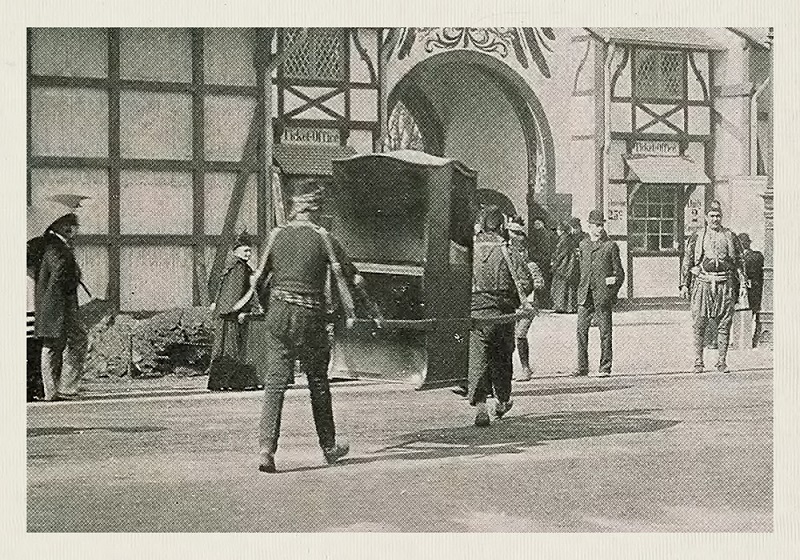
A sedan chair on the Midway Plaisance. [Image from Bancroft, Hubert Howe The Book of the Fair. The Bancroft Company, 1893.]
“Oh!” cried Ellen. “There is a sedan-chair! Does it not look as if it had just come out of a picture-book?”
“What fun it must be to ride in one!” said Nora. “ I think I should feel like my own great-grandmother.”
“You shall have an opportunity of judging, if we can find another chair for Ellen,” said her uncle. “These fellows belong in the Midway Plaisance, but occasionally come into the other parts of the grounds.”
He called to the men to halt; and, as no second chair was forthcoming, the girls agreed to take turns in riding in this one. After each had her turn, Aleck concluded to try it also.
“I feel as if I were the Sultan, being carried in state!” he proclaimed.
At last they reached their destination. Mr. Barrett dismissed the Turks and the chair, and they entered the building.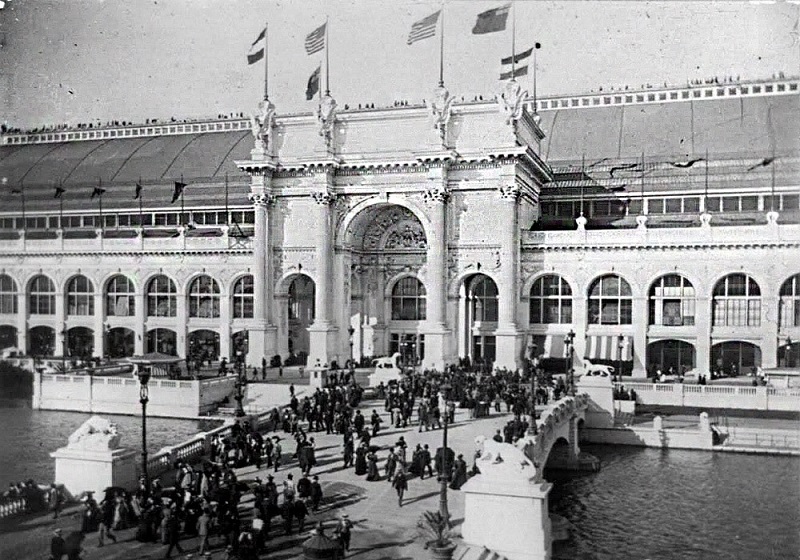
The Manufactures and Liberal Arts Building, showing the enormous central arch of its western entrance. [Image from the Library of Congress.]
“Why, Uncle, this is a city in itself!” said Ellen. “It is the largest structure of the Exposition, you remember,” replied Mr. Barrett. “The central arch is the greatest ever constructed for any edifice in the world. You may form an idea of its size from a statement of the chief engineer of the Fair, who said the other day that if it were possible to put the Rookery, one of the largest of Chicago’s great buildings, upon a mammoth wheelbarrow, and wheel it through the arch, it would not touch the sides or the top by several feet.[1] One thousand cottages could find room within these walls; and, to come down to trifles, to complete the floor alone required five car-loads of nails.”
Aleck gave a prolonged whistle of astonishment.
“What a grand glass roof!” said Nora. “It is as if the building had a sky of its own.”
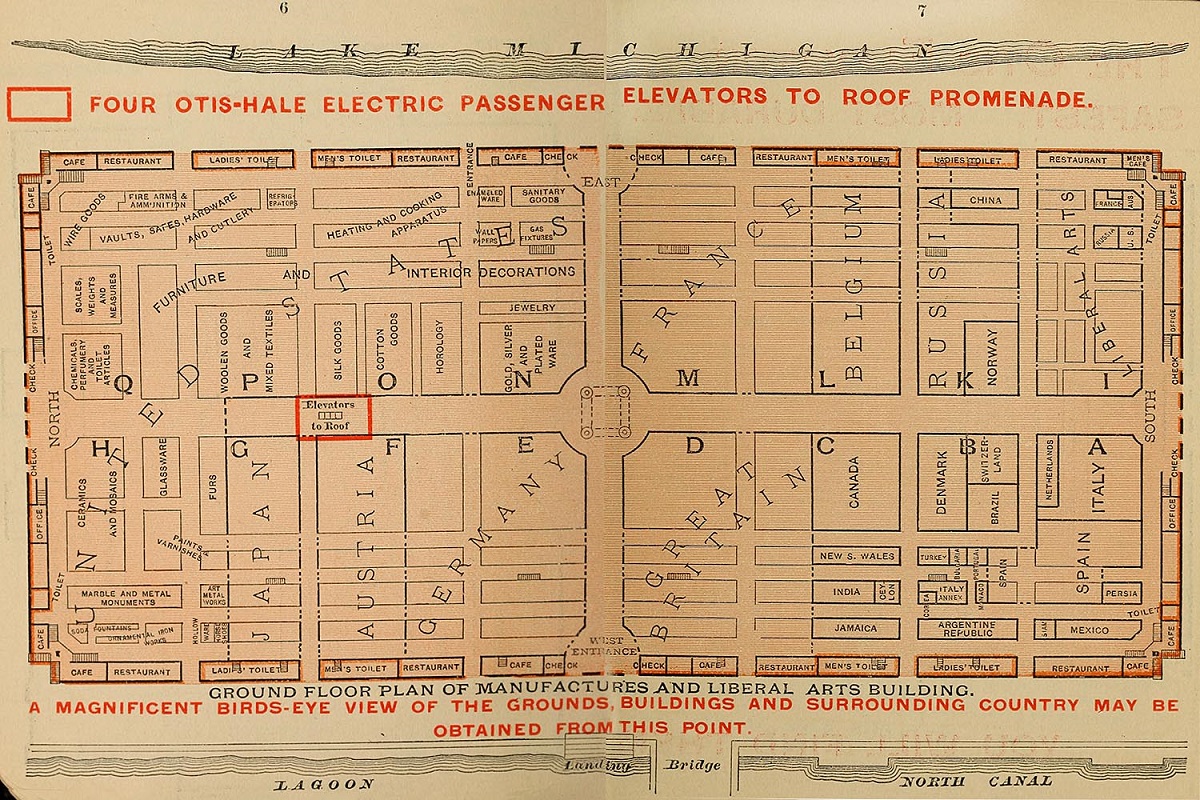
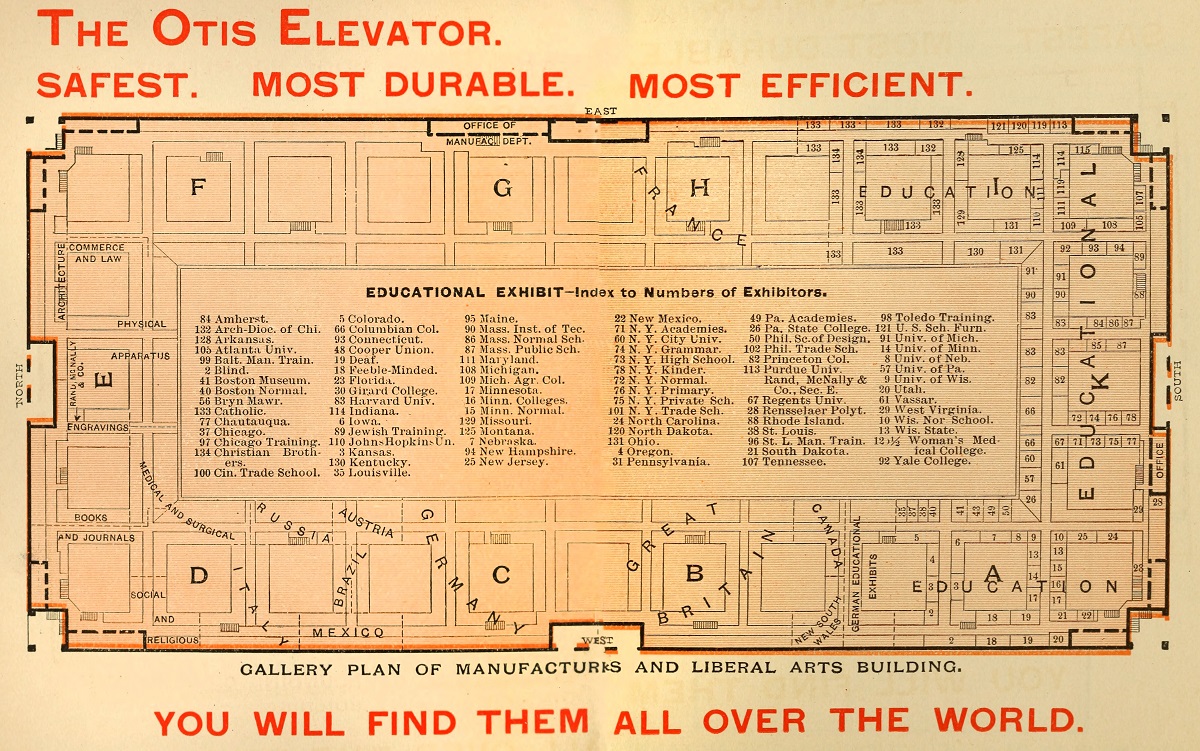
The floorplan showing the exhibition spaces in the Manufactures and Liberal Arts Building ground floor (top) and galleries (bottom). [Image from Diagrams of World’s Fair Buildings, Showing Location of Exhibits, Chicago, 1893. Rand, McNally & Co., 1893.]
“The ground space is divided into regular streets,” continued Uncle Jack. “If, any of you happen to get lost, ask one of the guards to direct you to Columbia Avenue, for that is the name of this main thoroughfare. On either side of it are the pavilions of the nations, of Europe principally, many of which are capacious buildings in themselves.”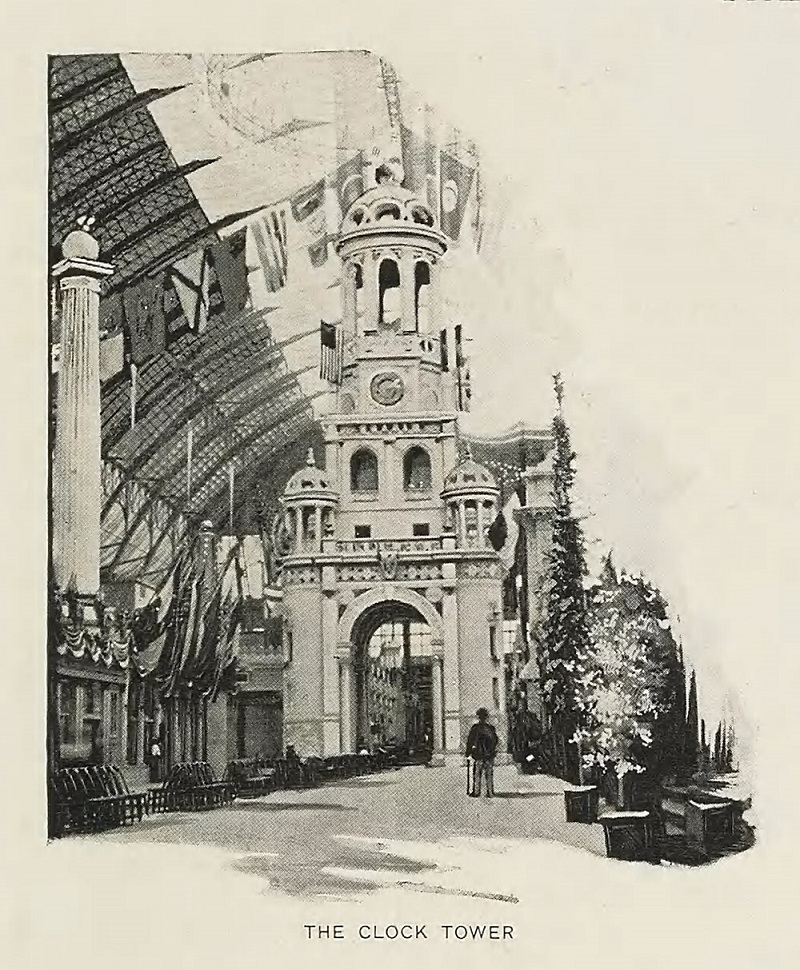
The Clock Tower from the Self-Winding Clock Company stood in the center of the Manufactures and Liberal Arts Building. [Image from Bancroft, Hubert Howe The Book of the Fair. The Bancroft Company, 1893.]
“That high Clock Tower which spans the Avenue, away down about half a mile yonder, looks like the picture of an old clock gate of some foreign town,” began Ellen. “But hark!”[2]
At this moment the voices of the chimes rang out from the tower in clear and beautiful melody, and our party paused to listen to the sweet music of “The Harp that once through Tara’s Halls.”
“Bless me! We shall never make the rounds if we begin by loitering,” said Uncle Jack, after a few minutes; so they proceeded to the Italian exhibit, the first on their right. Here the girls nearly went into raptures, or Aleck said they did, over the varied works of art that met their eyes upon every side. The mosaic framed mirrors; the exquisite iridescent crystal vases and Venetian glass ware, fit for an emperor’s table, from Salviati’s; the marble statuary, including lovely little figures of child life; the bronzes, and the magnificent display of laces.
Uncle Jack sighed, yet smiled, as he passed.
“These things bring back so many pleasant recollections,” he said. “My dears, such are the beautiful objects you would see in almost every shop window if you were walking beneath the arcades of St. Mark’s Square in Venice, or through the streets of Florence. We shall find more of the treasures from Italy among the pictures and sculpture of the Art Gallery.”
“Crossing to the Spanish section, we are, ostensibly, in the heart of Madrid. Spain has indeed the proudest exhibit at the Fair; for she can point to this whole grand country, saying: ‘Behold what I gave to the world! I alone, of all the nations of Europe, listened to the great navigator, and accorded him the aid he asked.’ But apart from this she has sent us a very interesting representation. The caravels, you know, are her gift to the United States in commemoration of Columbus. In one of the other buildings she shows models of the fortresses of Monjuisch and Corunna, which date back to the time of the Moors; and also one of the world-famed bridge of the Guadalquivir at Cordova, the foundations of which were laid when Our Lord was a child at Nazareth. Cordova, you know, is said to be the oldest paved city in Europe.”
“How foreign everything seems,” commented Ellen. “See these rich, Oriental-looking carpets, and the lovely Spanish embroideries and fans.”
“And the religious statues–how quaint yet sweet they are!” added Nora. “Here is one of the Infant Jesus that appears very real; and He is holding a crown of thorns in His hands.”
The girls next stopped before a pretty portrait of the young King of Spain. But Aleck soon called their attention to a collection of queer shoes which presented a history of footgear, from the earliest known device for the protection of this member, a sandal of braided rushes, to the riding boots of the Spanish cavalier, and the high-heeled, painted slipper of the señorita.
“Now we come to the English pavilion,” said Uncle Jack. “The front is a reproduction of Hatfield House, one of the most famous old palaces of England.”
“How delightful!” cried Ellen. “Can you not fancy, Nora, that we are travelling with the Colvilles?”
“It will hardly add to your interest to know that beneath the original of this richly paneled ceiling Henry VIII and Queen Elizabeth took their daily meals,” continued Mr. Barrett. “Notice the huge fireplace, Ellen, and the old tapestries.”
“And the carved oak wainscoting, the heavy folding-doors, and the armor,” added Aleck.
“Yes, we shall be able to talk quite as if we had been abroad,” declared Nora, so seriously that the others laughed.
It took a good while to view all that Great Britain had to show, especially as the girls lingered very long, their brother thought, at the exhibit of English Art China.
But Uncle Jack said one was likely to see such fine pieces of Royal Worcester ware only once in a lifetime. And when Aleck observed, amid the Cauldon china, twelve plates on which was painted the story of Evangeline, and was told that they were valued at $2,000, he thrust his hands into his pockets, whistled softly to himself, and thought of the costly havoc the traditional bull in a china shop would make in that establishment. After that he took off his hat with mock respect to the Shakespeare Vase, valued at $2,500, but announced with a comical air that he “believed he would not buy any china to-day.”
“I am not thinking of the cost, but of the beauty of the objects,” said Nora. “Only persons with the wealth of kings and queens can own them, but we are as fortunate as millionaires while we have the opportunity of enjoying them.”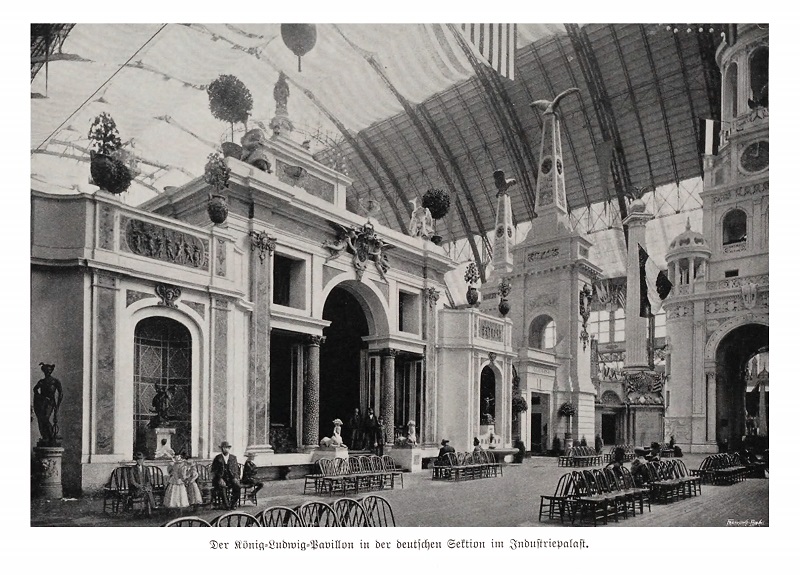
The King Ludwig pavilion inside German section of the Manufactures and Liberal Arts Building. [Image from Unsere Weltausstellung. Eine Beschreibung der Columbischen Weltausstellung in Chicago, 1893. Fred. Klein Co. 1894.]
In the German pavilion, even Aleck, however, was charmed with the beautiful Dresden china figures; the gay youths and maidens, and frolicsome children; the fairies and elves, and all the glad company that seemed to have nothing to do but sport and be merry, amid green fields and sunshine. And, then, the collection of paintings upon the celebrated Munich porcelain! Ellen took a special fancy to one of them, a Madonna, and longed to bring it home.
They saw too, a fac-simile of the Reception Room of the imperial palace at Berlin, and one of a room in the palace of King Ludwig of Bavaria.
“I hope his Majesty won’t object to my sitting on his doorstep; for I declare I cannot walk any farther,” protested Nora, sinking down as she spoke. The others were very willing to follow her example.
Presently, glancing at the clock in the tower, Uncle Jack cried:
“Really, it is past noon! Let us go to the café at the entrance to the building for lunch.”
After a substantial collation and a half hour’s rest, they were ready to resume their tour with renewed energy.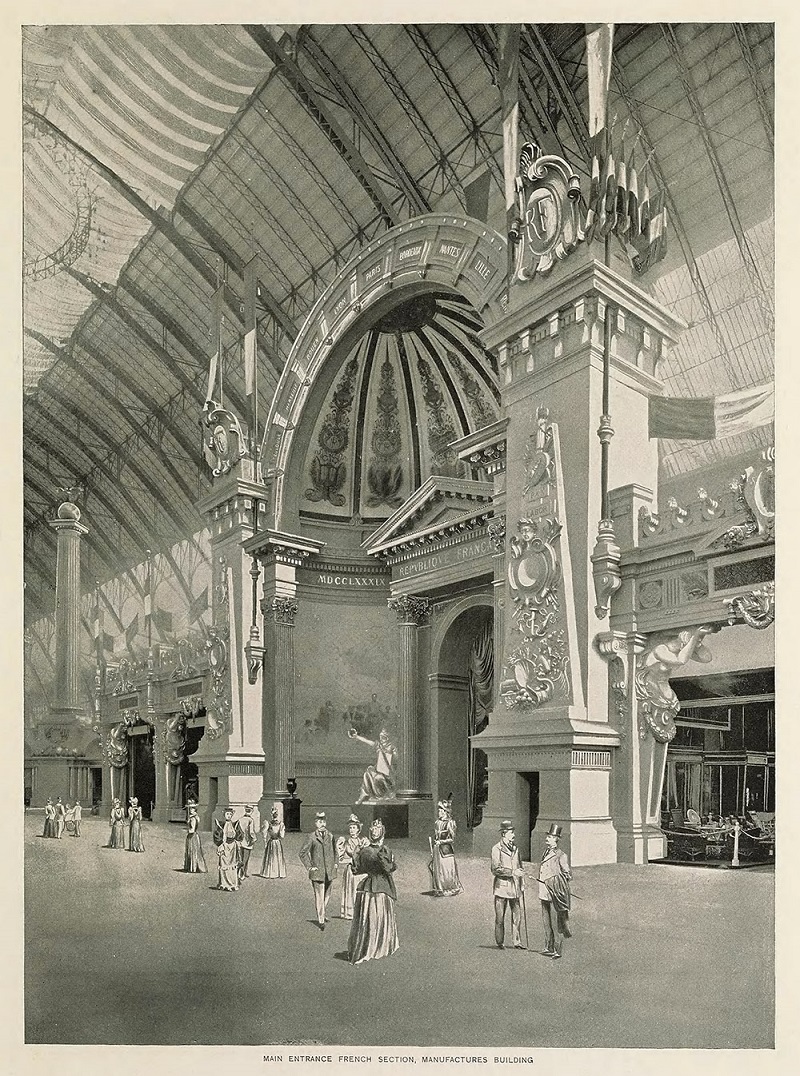
The imposing entrance to the French section of the Manufactures and Liberal Arts Building. [Image from Bancroft, Hubert Howe The Book of the Fair. The Bancroft Company, 1893.]
“Now we will visit the French section, which is directly opposite to Germany,” said Mr. Barrett.
Here he led them first to the Gobelin tapestries, which hung all around the walls of a large room or hall.
“This kind of picture weaving is the finest in the world, and these in particular are magnificent specimens,” he remarked. “The Gobelin works are owned by the French Government, and the tapestries cannot be bought at any price. They are wrought entirely by hand, and it takes an artisan more than a week to make a bit an inch square, while a square yard is considered a good year’s work. See, too, this matchless Sêvres vase. You are aware that the art of making this, the most precious of all china, is a carefully guarded secret. But girls, girls!” he continued, as the party emerged unexpectedly upon a display of gorgeous gowns and millinery. “Here you are, one may say, in the midst of the shops of Paris. There is Worth’s establishment on one side, and Félix’ on the other, with some other equally fashionable just across the way. Aleck, poor fellow, there is no hope for us! Your sisters will compel us to spend the remainder of the day here.”
Nora and Ellen laughed; and, although they had some compassion upon their escorts, it must be admitted that they delayed in this neighborhood.
“Did you ever imagine such superb dolls!” cried Nora, suddenly darting over to an imposing showcase. “Just look at that lovely little boy in a white silk suit, with long black curls down to his waist, and a large white hat. And his playmate, in a grey silk suit, is climbing a tree.”
“Jingo, what dudelets!” criticised Aleck, teasingly.
“But see this belle dressed in yellow silk,” continued Nora; “and that other one in pink, and one in blue,–all with pretty hats to match, and the costumes all designed by the most noted Parisian artists. There is a doll asleep; she moves as if really breathing. Would you not think she was alive? And here is one crying. Are not those like actual tears rolling down her cheeks?”
“Oh, her bird has been killed!” deplored Ellen. “Don’t you see, she holds it in her hand as if she had just found it?”
“That is a lovely dress she has on–white silk embroidered with pearls,” said Nora. “This doll in red silk appears to have run over to learn what is the matter; she has been playing, of course, with the ball that dangles from her wrist. On this side is a doll bringing a chair, in order to sit down and converse with a companion who is already seated and leans back with the air of a duchess. And do notice these dolls’ kid gloves and silk mitts.”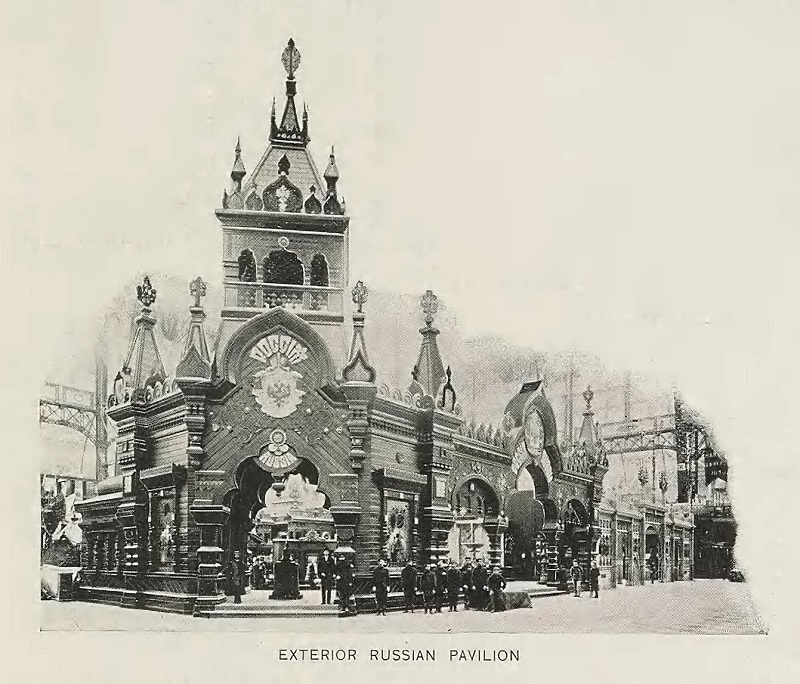
The grand entrance to the Russian pavilion. [Image from Bancroft, Hubert Howe The Book of the Fair. The Bancroft Company, 1893.]
Tired of waiting, Uncle Jack and Aleck had sauntered on. The girls now hastened after them to the Russian pavilion, where they gazed upon a magnificent display of costly furs and Russian bronzes; besides tables of malachite and lapis lazuli worth almost an equal weight in gold; a dinner and tea service exquisitely enameled on gold and silver, and many other objects of beauty and luxury from the land of the Czar.
The Japanese pavilion proved particularly interesting.
“Everything Japanese appears to be telling a story,” said Ellen. “The droll sculptured dragons of the bronzes, the figures on the vases, even the pictures on the fans,–all seem to grin and nod at one, as if acting out some amusing fairy tale. I know it would be very exciting if one could only understand it.”
Then they went through the Cingalese pavilion, which was supported by pillars of ebony; and the Siamese, the front of which was covered with gold-leaf.
They also visited the exhibits of South America, the East Indies, Egypt, Norway, Sweden and Denmark, Belgium and Greece,–in fact, of all the countries of the world which had pavilions, pagodas or kiosks along the spacious avenues of this wonderful building.
In the Swiss section they were fascinated by the beautiful watches.
“See that teenty watch set in a ring,” said Nora.
“There is another in the centre of a flower, and the flower itself is a brooch,” added Ellen. “But oh, look at that one between the wings of that little gold butterfly.”
Aleck, meantime, was examining a new invention; a watch for the blind, the mechanism of which the attendant explained to him.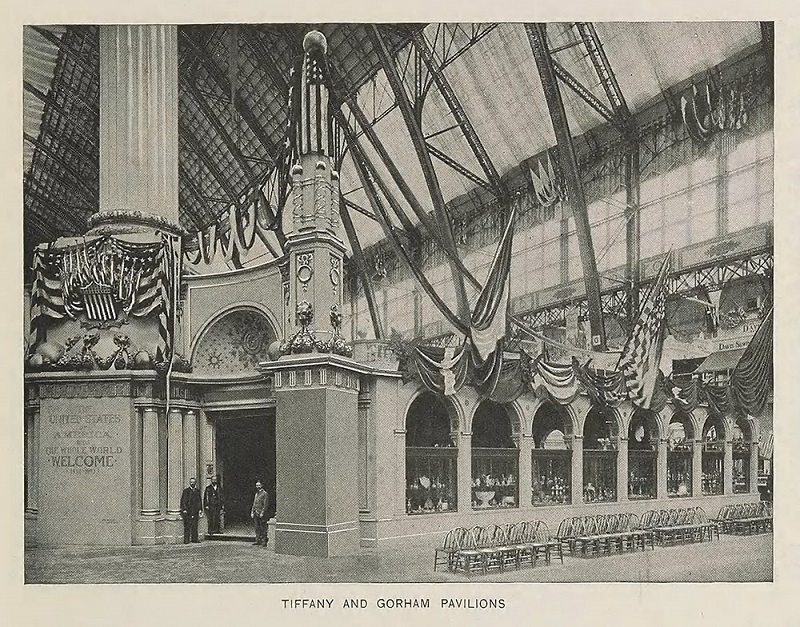
The magnificent entrance to the exhibit pavilions of Tiffany & Company and the Gorham Manufacturing Company. [Image from Bancroft, Hubert Howe The Book of the Fair. The Bancroft Company, 1893.]
“We have been so taken up with foreign countries that we have not paid much heed to the splendid exhibit of the United States; but suppose we take the display of Tiffany & Co., the celebrated New York jewelers, as an example,” said Mr. Barrett.
“We have seen nothing more splendid than this,” declared Ellen, as they entered the section. Wherever they turned, their eyes were greeted either by great flagons, bowls, and table services of gold and silver, or by the blaze of gems.
“It reminds one of Aladdin’s palace,” Nora remarked.
A throng of persons gathered about a show-case containing a matchless collection of jewels. Crowding up too, the girls discovered that the centre of attraction was a dashing yellow diamond as large as a robin’s egg and valued at a hundred thousand dollars.
“These gems are all magnificent,” said Uncle Jack, “because, although found in the clay like common pebbles, they are pure and perfect crystals, exquisite specimens of the workings of Nature, and evidences of the prodigal splendor of God’s creation. Regard them in this way, girls, and delight in them to your hearts’ content. But do not rave, as you say, over these rare diamonds, rubies, and sapphires, simply because they are magnificent trinkets with which to deck one’s vanity, or so many glittering stones, each one of which is worth a fortune.”
Nora gave her sister a sly nudge.
“I suppose Uncle Jack speaks in that way because he is an old bachelor,” she whispered. “But, after all, his idea about the gems seems to be the right one.”
The interior of the Manufactures and Liberal Arts Building, showing the exhibit space on the ground floor and upper galleries. [Image from Bancroft, Hubert Howe The Book of the Fair. The Bancroft Company, 1893.]
After viewing a specimen chapel which had windows of the handsome Tiffany stained glass and admiring the fine silver statue of Columbus in the section of the Gorham Manufacturing Co., they mounted to the vast galleries of the building, the Department of Liberal Arts. There they found the exhibits of the schools and colleges of the United States.
“Somebody told me we should see here the first photograph ever taken,” said Ellen.
“I presume you mean the first sun-picture of the human countenance?” returned the lady in charge. “It is this little miniature.”
The young people eagerly bent over the picture, which was of the kind called daguerreotype, that afterwards became common in the days of our grandfathers and grandmothers. They discerned a small faded portrait of a pretty young lady, in a much beruffled gown and an immense bonnet.
“This was the sister of Prof. Draper,” continued the attendant. “The picture was taken by him on the roof of the University of New York, one day during the summer of 1840. The camera which he used he had made himself out of a cigar box, the lens being one of the eyes of an old pair of spectacles. It was one of the first cameras known. In the case over there you will notice a copy of it. The picture was regarded as so great and interesting a scientific curiosity and discovery, that Prof. Draper sent it to Sir John Herschel, the celebrated astronomer. Here is the autograph letter of Sir John acknowledging the gift, which is still the property of the Herschel family, and was sent by them from England for this exhibit.”
“We have also the first telegraph message ever sent. Morse, the inventor of the telegraph, was, as perhaps you know, a professor of the University of New York. The wires were first put up in the chapel of the University, January 22nd, 1838, and this first telegram was sent by Prof. Morse, stationed at one end of the hall, to Prof. Cummings at the other.”
The party crowded around a show-case, upon the glass of which was fastened a strip of time-yellowed paper pierced with a series of the lines and dots of the Morse alphabet,–those mysterious little characters which look so trifling yet mean so much.
“Prof. Cummings had recently received a commission as general, which accounts for the jestingly martial tone of the message,” the lady explained:
“This is the translation:
‘Attention! The Universe by Kingdoms. Right Wheel!’”
In the section devoted to ‘Old Harvard,’ it was a rare treat to see original manuscripts of Longfellow, and other of her distinguished littérateurs.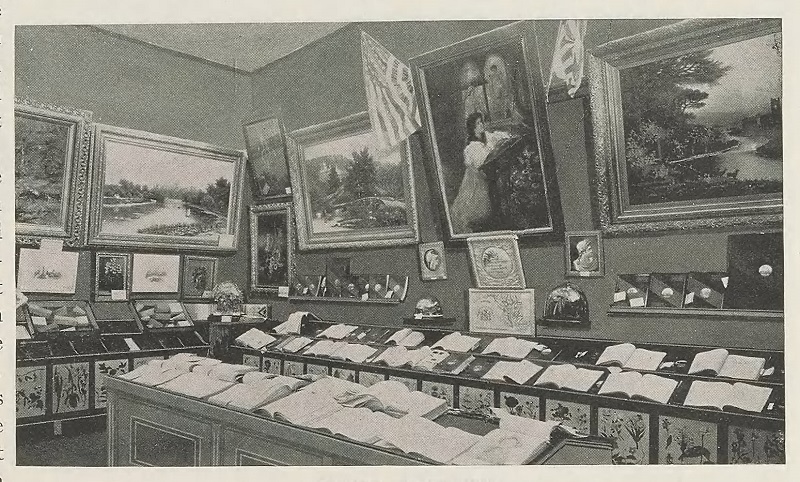
The Catholic Educational Exhibit, housed in the upper gallery of the Manufactures and Liberal Arts Building. [Image from Bancroft, Hubert Howe The Book of the Fair. The Bancroft Company, 1893.]
Our friends next went all to the Catholic Educational Exhibit, in which Notre Dame and Georgetown Universities made particularly fine displays, and many academies and schools were well represented. Uncle Jack devoted a great deal of time to this exhibit, and the girls and Aleck also found it very interesting.
[An account of the Kendrick family’s next day at the 1893 World’s Fair begins in Chapter 6 of The City of Wonders with a visit to three more of the grand exhibition halls to hear a phonograph, see a solid silver statue, and smell a temple made of chocolate.]
NOTES
[1] “which won the American Derby the other day” Although the 1893 Kentucky Derby was held on May 10, other textual evidence suggests that this story is set in mid July.
[2] “Is it the celebrated 999?” Shortly after the record-breaking run of the Empire State Express engine No. 999 on May 10, 1893, it travelled to the World’s Fair in Chicago. Retired from service in 1952, the engine returned to the old fairgrounds in 1962 to become part of the collection of the Museum of Science and Industry, where it is on display today.

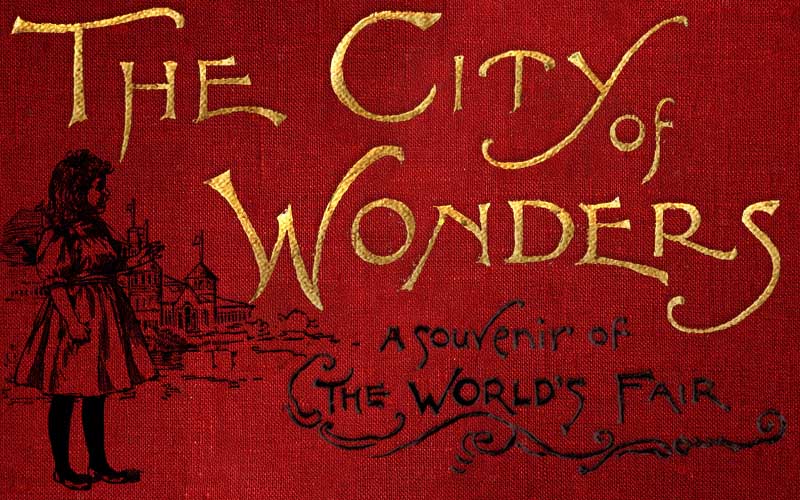
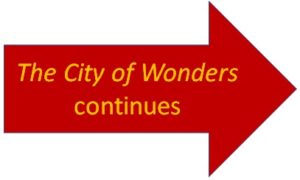
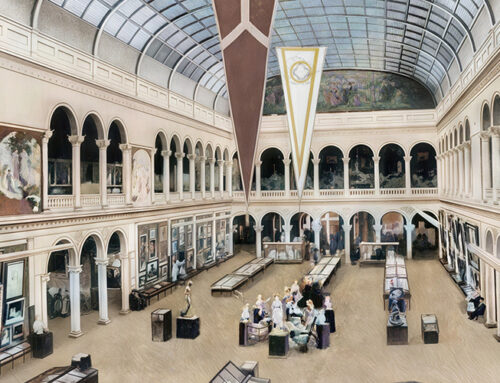
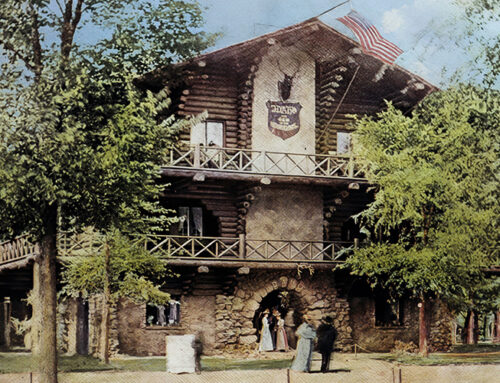
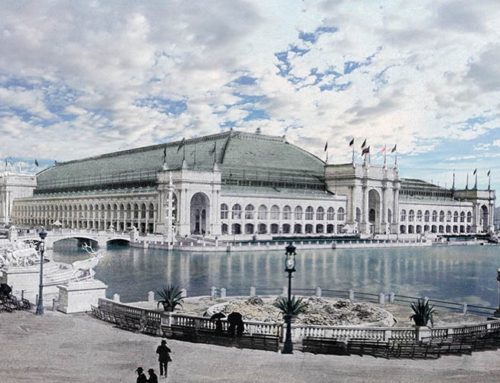
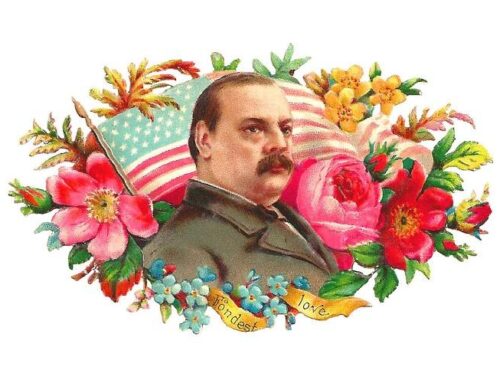
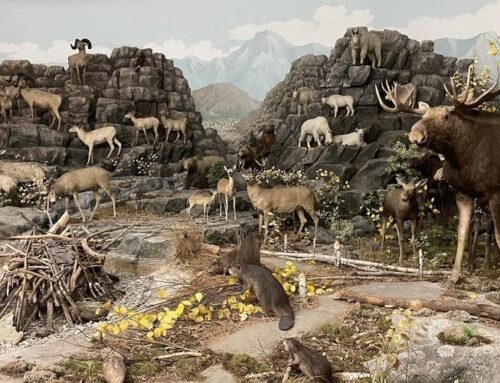
Leave A Comment